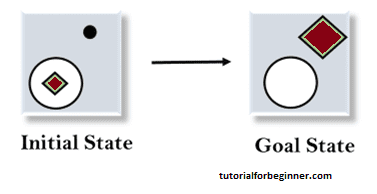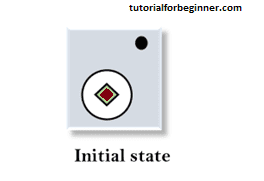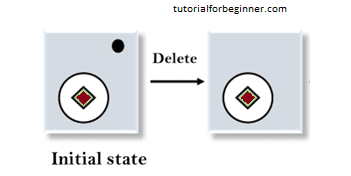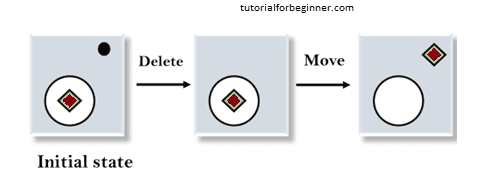Means-Ends Analysis in AI
Table of Content:
- What is means-Ends Analysis in AI?
- How means-ends analysis Works
- Operator Subgoaling
- Algorithm for Means-Ends Analysis.
- Example of Mean-Ends Analysis.
Content Highlight:
Means-Ends Analysis in Artificial Intelligence (AI) is a problem-solving technique pioneered by Allen Newell and Herbert A. Simon in their General Problem Solver (GPS) program. It efficiently tackles complex problems by evaluating the differences between the current state and the goal state, employing a mix of backward and forward search strategies. The MEA process involves identifying operators applicable to each disparity and systematically implementing them to narrow the gap between states. Operator Subgoaling further enhances MEA by breaking down problems into manageable subproblems. However, while MEA is effective for simple problems, it may not suffice for resolving complex issues. An example demonstrates how MEA works by identifying differences, applying operators, and iteratively progressing towards the goal state.
What is means-Ends Analysis in Artificial Intelligence?
Means-Ends Analysis in Artificial Intelligence (AI) is a problem-solving technique that combines backward and forward search strategies, allowing for efficient resolution of complex problems. This method, introduced by Allen Newell and Herbert A. Simon in 1961 within their General Problem Solver (GPS) program, involves tackling the primary aspects of a problem before addressing smaller issues that arise during the integration of these major components. MEA focuses on evaluating the discrepancy between the current state and the goal state in the problem-solving process, thereby streamlining the search in AI programs. By employing a mixed strategy of reasoning, Means-Ends Analysis facilitates the resolution of large and intricate problems encountered in artificial intelligence.
How means-ends analysis Works:
Means-Ends Analysis operates as a recursive problem-solving strategy, pivotal in controlling search processes. The method involves a systematic approach to navigating complex problems. Here's how it works:
- Evaluate the distinction between the Initial State and the Final State.
- Identify various operators applicable to each disparity.
- Implement these operators systematically, targeting each difference to progressively narrow the gap between the current state and the goal state.
This iterative process efficiently guides the problem-solving journey, leading to effective solutions.
Operator Subgoaling:
Operator Subgoaling is a crucial concept within the Means-Ends Analysis (**MEA**) process. When discrepancies arise between the current state and the goal state, operators are typically employed to bridge this gap. However, there are instances where an operator cannot be directly applied to the current state. In such cases, a strategy akin to backward chaining is employed. This involves selecting operators and subsequently establishing subgoals to fulfill the preconditions necessary for the operator's application. By breaking down the problem into manageable subproblems where operators can be effectively utilized, Operator Subgoaling optimizes the problem-solving process within MEA.
Algorithm for Means-Ends Analysis:
- Step:1 Compare CURRENT to GOAL. If there are no differences between both, return Success and Exit.
- Step:2 If differences exist, select the most significant one and proceed with the following steps until success or failure occurs:
- Select a new operator O applicable for the current difference. If no such operator exists, signal failure.
- Attempt to apply operator O to CURRENT. Describe two states:
- O-Start: A state where O's preconditions are satisfied.
- O-Result: The resulting state if O were applied to O-Start.
- If
(First-Part <-- MEA (CURRENT, O-START)
And
(LAST-Part <-- MEA (O-Result, GOAL), are successful, then signal Success and return the result of combining FIRST-PART, O, and LAST-PART.
This algorithm, while suitable for simple problems, may not suffice for resolving complex problems effectively.
Example of Mean-Ends Analysis:
Let's look at an example where we know the starting state and the desired state. In this issue, we must detect differences between the beginning state and the goal state and apply operators to obtain the goal state.

Solution:
To solve the problem, we will first identify the differences between starting and goal states, then construct a new state and apply the operators to each difference. For this problem, we have the following operators:
- Move
- Delete
- Expand
1. Evaluating the initial state: In the first step, we'll evaluate the initial state and compare it to the Goal state to see what the differences Evaluating the initial state: In the first step, we'll evaluate the initial state and compare it to the Goal state to see what the differences are.

2. Applying the Delete operator: As you can see, the first difference is that there's no dot symbol in the Goal state, whereas there is in the initial state, so we'll use the Delete operator to remove it.

3. Applying the Move Operator: After using the Delete operator, a new state appears, which we will compare to the objective state again. After comparing these states, we notice that the square is outside the circle, so we'll use the Move Operator to fix it.

4. Applying the Expand Operator: In the third phase, a new state is created, and we will compare it to the desired state. There is still one difference between the states, which is the size of the square, so we will use the Expand operator to construct the desired state.
